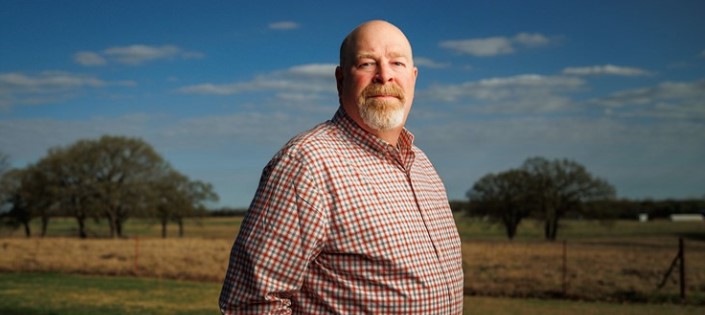
Agricultural News
Steve Swaffar Outlines Most Critical Soil Health Improvement Principles
Tue, 16 Aug 2022 10:34:39 CDT
 Associate Farm Editor, Reagan Calk, sat down with Steve Swaffar from the Noble Research Institute as he talked about steps to take to build healthy and resilient soil.
Associate Farm Editor, Reagan Calk, sat down with Steve Swaffar from the Noble Research Institute as he talked about steps to take to build healthy and resilient soil.
“A healthy soil is one that typically has a very dark color to it, it smells earthy, it has lots of biological activity in it and it is porous,” Swaffar said. “There is lots of air space between the soil particles. Those are the characteristics that also make it resilient, make it infiltrate water down through the soil profile through those air spaces between the soil particles, and that’s also what helps it be resilient to drought because it is not holding more water.”
Resilience comes from healthy soils, Swaffar said, and healthy soils build resilient soils, so it is a circular system.
“There are five soil health principles,” Swaffar said. “They are cover your soil, minimize disturbance, keep a living plant or a living root growing in the soil as much as possible, integrate livestock and adding diversity in plants and animals to the landscape so that you are having more than just one type of plant or more than just one type of livestock out there.”
The other piece of the five soil health principles is context, Swaffar said, which means understanding how those are going to apply on your own farm or ranch. There is not one recipe for the perfect soil health, Swaffar added, so it is important to understand how your soil is going to react when you implement the principles.
Swaffar said analyzing the health of your soil starts with looking down and determining what percent of the soil is bare and not covered with anything.
“You should strive to be 90 percent covered or more, or have less than 10 percent exposed soil,” Swaffar said. “That is pretty difficult at times, particularly like now when we have a drought, we are not able to grow very much, but that is a big one is to keep that soil covered.”
Typically, Swaffar said healthy soil is a dark brown color and will have an earthy-vegetable smell.
“It is not going to smell like metal or manure or some other sulfur- based compound,” Swaffar said. “It is going to smell like the earth.”
A valuable characteristic of healthy soil is organic matter, Swaffar said, which contains carbon.
“As we add carbon to the system, we build organic matter, and that organic matter is typically that top eight inches of soil,” Swaffar said. “It can be as small as one, but that organic matter is what is putting carbon into the soil.”
For each percentage of organic matter built into the soil, Swaffar said anywhere from 20 and 30 lbs. of nitrogen will be liberated.
“Essentially, the Carbon is giving us free Nitrogen,” Swaffar said. “Free Nitrogen in this day in age is something that everybody wants.”
Swaffar also went into more detail about the benefits running more than one species on a property can provide for pasture health.
“The various forage types really fit well with different types of grazing livestock,” Swaffar said. “A cow is mostly going to focus on grasses, but a sheep for instance will focus on what a lot of people call weeds, but they are forbs, and they are a broader leaf type of pasture plant that we see.”
Goats for example, Swaffar said, can be helpful in controlling woody plant species because they will feed on them. Goats will feed on woody plant species before they eat the grasses and the forbs, Swaffar added.
For those interested in more information to help improve their soil health, Swaffar said the Noble Research Institute is in the process of developing information and products at noble.org, but the NRCS, Oklahoma Conservation Commission and the Oklahoma Association of Conservation Districts are good places to visit as well.
Click the LISTEN BAR below to hear more from Steve Swaffar on improving the health of your soils.
WebReadyTM Powered by WireReady® NSI
Top Agricultural News
More Headlines...




